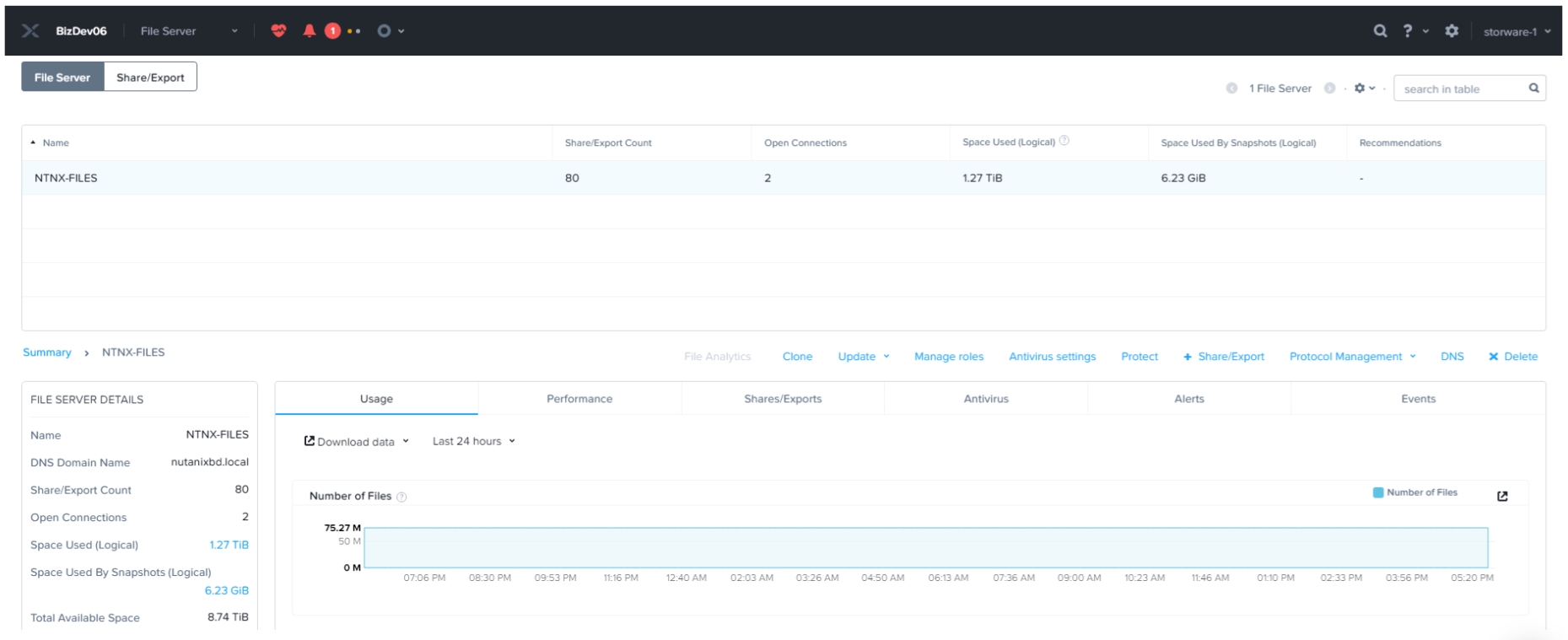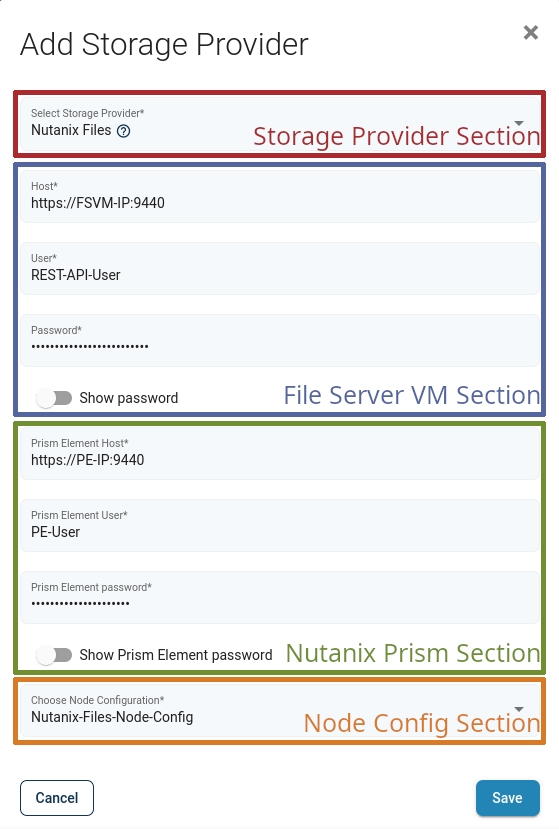Nutanix Files

General
Nutanix Files offers file system storage in the form of network shares (SMB or NFS). With Storware Backup & Recovery, you can easily back up and recover these shares.
In general, the process looks as follows:
the user adds a new storage provider (Nutanix files)
inventory synchronization retrieves all the information about storage (of two types: SMB and NFS)
the user can then do a full backup (storage is mounted and all files are extracted from it)
incremental backup uses CFT from the API, and based on this list Storware Backup & Recovery only downloads changed files.
Example
Complete the following steps to add the Nutanix Files storage provider:
Go to Storage -> Infrastructure and click on Create button

In the form, provide:
Nutanix Filesas the Storage Provider typeFile Server URL in the
Hostfield (https://FileServerVM-IP:9440)Login and password for File Server VM
The
adminaccount cannot be usedUser has to be authorized as
REST API access userinFile Server Console>Configuration>Manage RolesIf you want to use domain account, enter it in the following format:
domain\username
The URL to the Prism Element Host (
https://PRISM_ELEMENT:9440)User login and password to Prism Element Host
The
adminaccount cannot be usedUser has to have Cluster Admin privileges on the cluster
If you want to use domain account, enter it in the following format:
[email protected]
Choose the node configuration responsible for operations.
The node has to have network communication over port 9440 to File Server VM Client Network IP and Nutanix Prism.
Click Save button - now you can run inventory synchronization to detect file systems (storage instances) - they will be visible in Storage -> Instances view
Now you can assign backup SLAs in Storage -> Backup SLAs to schedule periodic backups of these shares. You are also able to mount backups to restore individual files using Mounted Backups (File-level Restore).
Limitations
Backup/Restore of hidden shares on Nutanix Files with SMB are not supported.